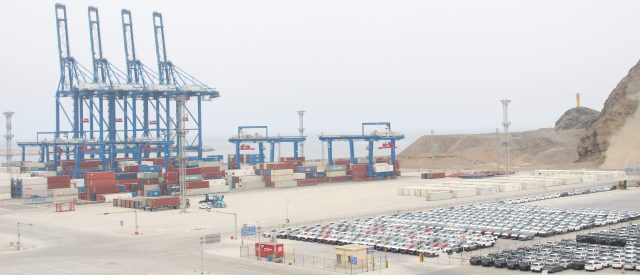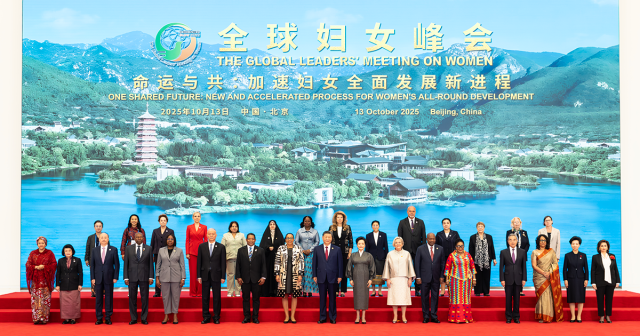Interview with affiliated researchers in Capechi Trade: The growing trade between Peru and China: The contribution of the FTA
Por: Revista Capechi Trade N°13, Junio 2023 | 30 June, 2023

Since the middle of the last decade, China has become Peru’s main trading partner as the top destination for our exports and the foremost supplier of Peruvian imports. Thus, according to figures from SUNAT Customs, in 2022—the twelfth year of the free trade agreement (FTA) between Peru and China—Peruvian exports to the Chinese market totaled US$ 20,791 million (32.9% of our total exports) while imports from China stood at US$ 15,782 million (26.2% of all the country’s acquisitions).
In this article we will focus on the evolution of Chinese imports and the use of the preferences conferred by the FTA between Peru and China in these trade flows, as well as indications of other types of effects on trade relations between Peruvian importers and Chinese suppliers.
THE PIVOTAL ROLE OF THE FTA
The importance of Chinese exports for Peru is evident when one observes the growing trend by use or destination of the products traded over the last twenty years. Consumer goods went from 18% of total transactions in 2003 to 35.7% in 2022; intermediate goods went from 3.7% in 2003 to 15.5% in 2022; and, finally, capital goods went from 7.4% to 35.3% over the same period.
Twenty years ago consumer goods accounted for more than half of the value of these transactions, while by 2022 this share had fallen to 25.6%. This indicates that virtually three quarters of all Peru’s Chinese imports are bound for productive activities.
Evidently, the entry into force of the FTA has been vital for the consolidation of the Asian giant as Peru’s main trading partner—a bilateral relationship that extends beyond international trade to include growing foreign direct investment in Peru. This reflects the function of FTAs as trade policy instruments that cover areas such as trade facilitation, sanitary and phytosanitary measures, trade in services, investment, dispute settlement, and cooperation.
However, the dimension that is usually the most exposed to public scrutiny—because it has directly observable indicators—is the preferential treatment for bilateral trade. For exports, having preferential access to the Chinese market is a key source of competitiveness; for imports, the ability to enter the Peruvian market with reduced tariffs ought to lower the prices paid by consumers and the costs faced by firms that use intermediate and capital goods.
At the Center for China and Asia-Pacific Studies at Universidad del Pacífico (CECHAP) we have been developing a research agenda that has focused on analyzing the degree of use of the tariff preferences conferred by the FTA between Peru and China, at the level of both Peruvian exports and imports. To this end, the main indicator we use is the preference utilization rate, defined as the value of the products to which a preference conferred by the FTA is actually applied divided by the value of the products eligible for this benefit—that is, those products that have a positive tariff (of 6 or 11%).
It is important to understand two further details: first, not all products traded between two countries receive tariff reductions; Second, the preferences conferred by FTAs are optional: it is the exporters in each country who decide whether or not to actually use them.
“The entry into force of the FTA between Peru and China has been essential for the consolidation of China as Peru’s main trading partner […] which is also reflected in the growing foreign direct investment that we receive.”
QUESTIONS IN SEARCH OF ANSWERS
On the import side, the bulk of eligible products are durable consumer goods (e.g. electronic products) and intermediate goods for manufacturing. In the former case, the use of preferences (which should mainly benefit consumers) increased from 37.2% in 2014 (after five years of the FTA) to 64.9% in 2019 (the last year for which we have complete data). In the case of intermediate goods for manufacturing, the use of preferences (which should mainly benefit the productive activities of Peruvian companies) went up from 7.1% in 2014 to 12% in 2019.
These figures indicate that there is still ample scope to increase the use of the tariff preferences granted by Peru to Chinese imports.
“The reasons why Chinese exporters do not take advantage of the tariff benefits of the FTA, especially in the case of intermediate goods, remain to be understood.” – Research Affiliate Jorge Chávez Cotrado.
Given that it is exporters who usually bear the costs associated with the use of tariff preferences, it remains to understand the reasons why Chinese exporters do not take advantage of the tariff benefits of the FTA, especially in the case of intermediate goods. On the one hand, the saving us unlikely to be trivial since the tariff paid on eligible products ranges between 6 and 11%. In other words, increased application of the FTA’s benefits for these goods would ultimately translate into significant cost savings for the firms that use these inputs or intermediate goods in their production processes.
On the other hand, it may be that the administrative cost associated with taking advantage of the preferential treatment, as established by the rules imposed by the FTA itself (e.g. the rules of origin), is too high for Chinese exporters, with the result that they opt not to use them. A third possibility might be that the bargaining power of Peruvian importers is reduced, and Chinese exporters do not consider it necessary to offer the possibility to utilize the FTA as an advantage when establishing a commercial relationship. These are questions that remain to be answered in our research agenda. We hope that this type of analysis will contribute to enriching the negotiation process for the optimization of the Peru-China FTA that began in 2019 and which should be resumed soon.
“There is still ample scope to increase the use of the tariff preferences granted by Peru to Chinese imports.” – Research Affiliate Antonio Cusato Novelli.
View more
